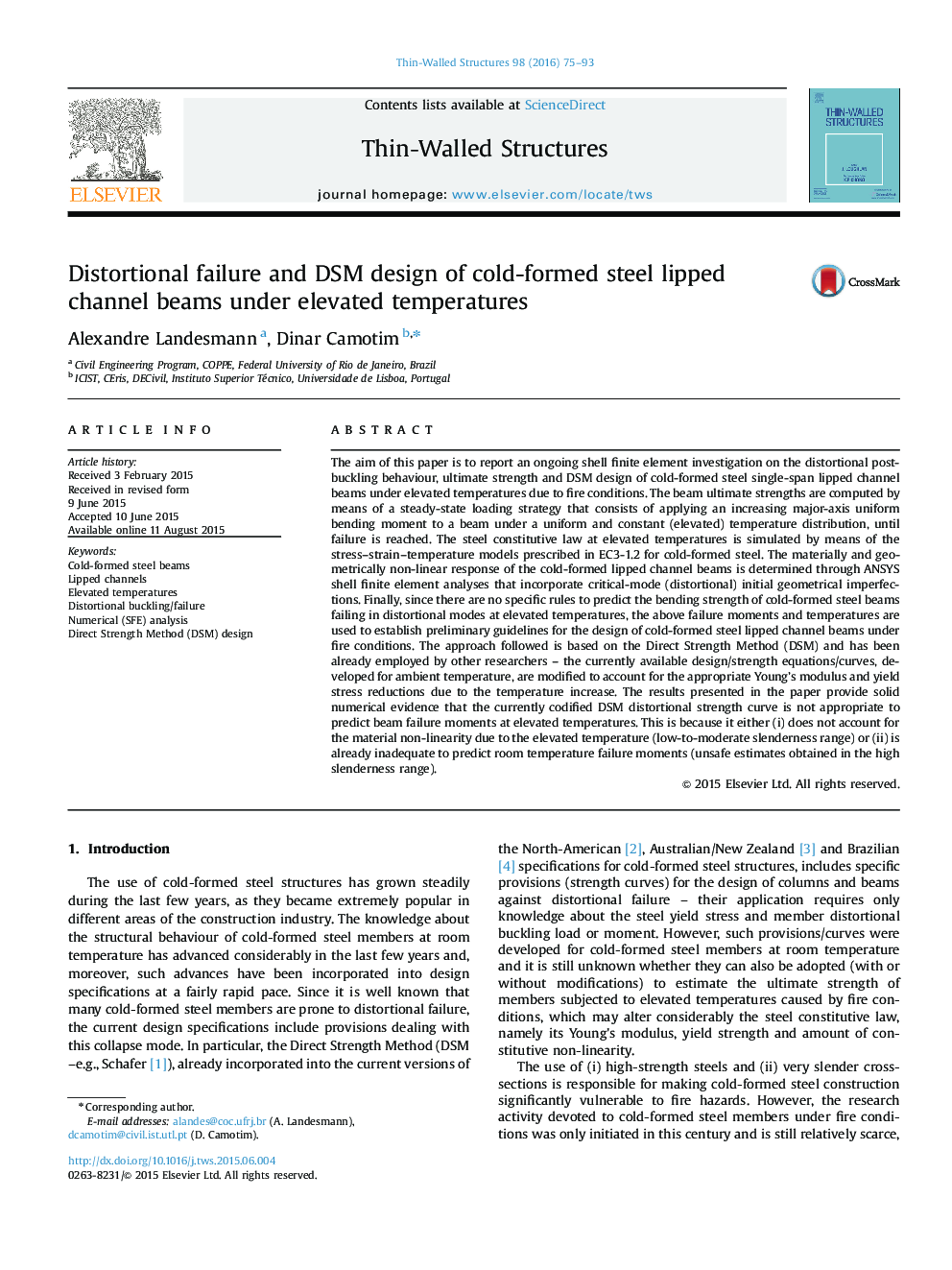| Article ID | Journal | Published Year | Pages | File Type |
|---|---|---|---|---|
| 308575 | Thin-Walled Structures | 2016 | 19 Pages |
•Response and design of cold-formed steel beams failing distortionally at elevated temperatures.•Numerical investigation: 1050 lipped channel beams covering a wide distortional slenderness range.•Simply supported beams with three end support conditions, differing in warping/lateral restraint.•Failure moments determined by means of a steady-state loading strategy.•DSM design against distortional failure of beams at elevated temperatures: preliminary guidelines.
The aim of this paper is to report an ongoing shell finite element investigation on the distortional post-buckling behaviour, ultimate strength and DSM design of cold-formed steel single-span lipped channel beams under elevated temperatures due to fire conditions. The beam ultimate strengths are computed by means of a steady-state loading strategy that consists of applying an increasing major-axis uniform bending moment to a beam under a uniform and constant (elevated) temperature distribution, until failure is reached. The steel constitutive law at elevated temperatures is simulated by means of the stress–strain–temperature models prescribed in EC3-1.2 for cold-formed steel. The materially and geometrically non-linear response of the cold-formed lipped channel beams is determined through ANSYS shell finite element analyses that incorporate critical-mode (distortional) initial geometrical imperfections. Finally, since there are no specific rules to predict the bending strength of cold-formed steel beams failing in distortional modes at elevated temperatures, the above failure moments and temperatures are used to establish preliminary guidelines for the design of cold-formed steel lipped channel beams under fire conditions. The approach followed is based on the Direct Strength Method (DSM) and has been already employed by other researchers – the currently available design/strength equations/curves, developed for ambient temperature, are modified to account for the appropriate Young’s modulus and yield stress reductions due to the temperature increase. The results presented in the paper provide solid numerical evidence that the currently codified DSM distortional strength curve is not appropriate to predict beam failure moments at elevated temperatures. This is because it either (i) does not account for the material non-linearity due to the elevated temperature (low-to-moderate slenderness range) or (ii) is already inadequate to predict room temperature failure moments (unsafe estimates obtained in the high slenderness range).
